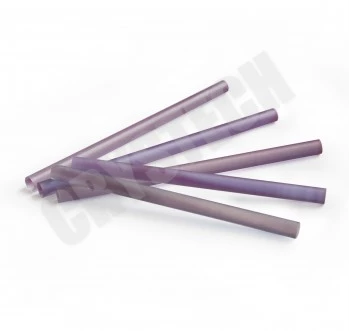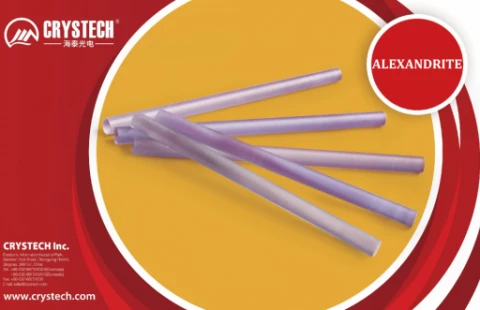CRYSTECH - Alexandrite Laser Crystal
Description
Alexandrite (Cr3+:BeAl2O4, chromium-doped beryllium aluminate) is a laser gain material used in solid-state lasers for applications such as dermatology and Lidar, etc. Alexandrite is produced via the Czochralski growth method. It has a thermal shock resistance five times that of Nd:YAG and a wide emission wavelengths typically between 710nm and 800nm – in many cases around 755nm.
It is possible to make broadly wavelength-tunable lasers based on alexandrite. Alexandrite is anisotropic, the absorption and gain properties strongly depend on the direction of pump light’s polarization. This together with the strong birefringence of the material makes it easy to obtain linearly polarized emission with low depolarization losses.
CRYSTECH - Alexandrite Laser Crystal
Specifications |
|
|---|---|
| Type Of Crystal: | Other |
| Crystal Diameter: | 3 mm |
| Crystal Length: | 3 mm |
| AR Coating: | One side, Both sides, Uncoated |
| Website : | http://www.crystech.com/ |
Features
- Low threshold, High efficiency
- High damage threshold
- Excellent quality
- Competitive price
- Fast delivery
Applications
- Laser Medical Devices for Long Pulse, Q-switch or pico-second 755nm Lasers
- Dermatology
- Lithotripsy
- Spectroscopy
- Atmospheric Lidar
For pricing, technical or any other questions please contact the supplier
- No registration required
- No markups, no fees
- Direct contact with supplier
-
Ships from:
China
-
Sold by:
-
On FindLight:
since 2018
Frequently Asked Questions
Alexandrite is produced via the Czochralski growth method.
The advantages of using Alexandrite Laser Crystal include low threshold, high efficiency, high damage threshold, excellent quality, competitive price, and fast delivery.
The applications of Alexandrite Laser Crystal include laser medical devices for long pulse, Q-switch or pico-second 755nm lasers, dermatology, lithotripsy, spectroscopy, and atmospheric Lidar.
Alexandrite Laser Crystal is used as a laser gain material in solid-state lasers for applications such as dermatology and Lidar.
The emission wavelength of Alexandrite is typically between 710nm and 800nm, and in many cases around 755nm.


